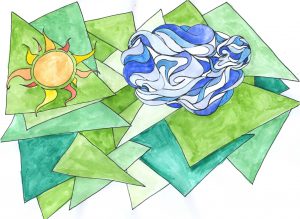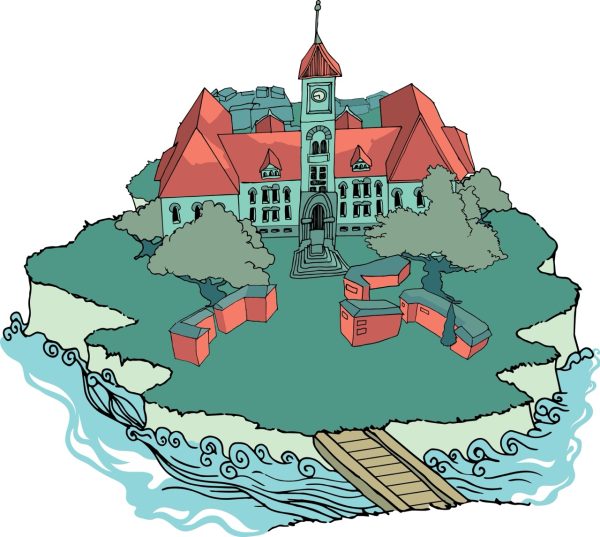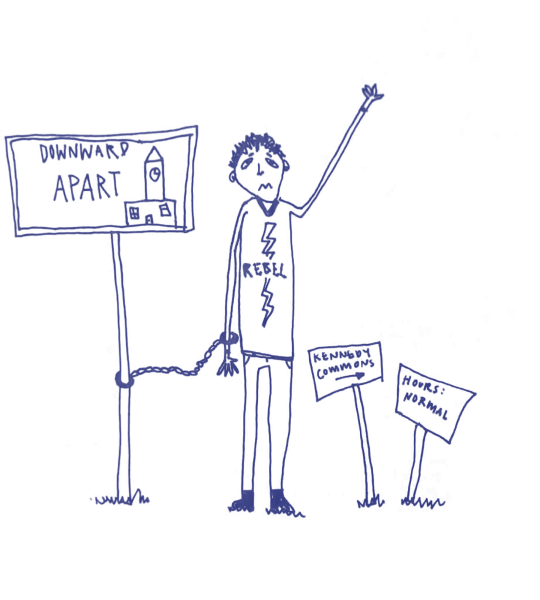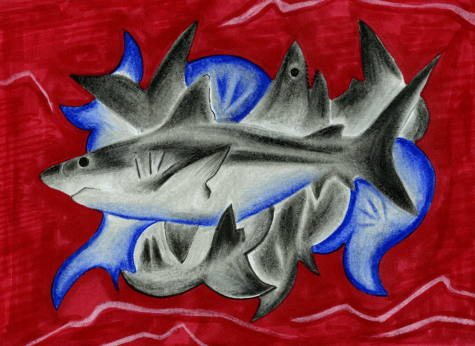The Smiles and Sorrows of Spring
April 1, 2017
On Monday, March 20 at 3:28 A.M. the first rays of sunlight crossed over the equator into the Northern Hemisphere, signaling the onset of those myriad feelings known as “Spring fever.” Soon, to quote an amusingly sexist 1922 article published in this very paper, “strong men will labor and gentle co-eds will cavort upon the green sward in careless garb and excess of ecstasy.” Frolicking ducklings will be trailed by frolicking couples around Lakum Duckum, overworked students will wallow half-naked in Hunter’s fountain, and groups of riotous scholars will scurry barefoot through the wheat fields, confirming Margaret Altwood’s assertion that “in the Spring, at the end of the day, you should smell like dirt.”
It must bother professors of fields that don’t thrive on human capriciousness that every April their students grow impatient, yearning for long hours spent extended under the springtime sun. But, of course, so often the professors of even the hardest of hard fields succumb to Springtime fever, finding themselves extended (we hope) just out of view of their students. Any decline in test scores or student participation must escape notice by all but the most air-conditioned of teachers.
Of course, the symptoms of Springtime fever aren’t restricted to restlessness and moments of sun-induced joy. An unfortunate—although perhaps particularly perceptive—subset of Whitties might find themselves afflicted by lethargy and deep melancholy. This group is bound to find affinity with Wordsworth and Elliot, for whom Springtime pleasantries carry baggage—sad thoughts in the first case and the cruel mixing of memory and desire in the second (check out Wordsworth’s “Lines Written in Early Spring” and Elliot’s “The Wasteland” if you are one of these unfortunates).
It’s in the mixing of the seemingly conflicting symptoms of Spring fever—melancholy and joy, memory and desire—that we find the roots of those springtime festivities that so often bewilder the uninitiated; the Maypole dances celebrating fertility, the recognition of transience through Hanami (cherry blossom viewing), and the Christian tradition’s celebration of Jesus’s rebirth, where the joy of return is frustrated by memories of deep suffering. Perhaps with a little effort we might be able to extract a

similar admixture of feeling from the Naked Mile.
Here I have tried to show that the feelings you are experiencing are much richer than they might at first appear, but of course a few paragraphs in a newspaper can hardly capture what is, in the end, the single most important thing. In order to do that you must frolic and read poetry and become impatient in class and wallow in fountains and experience the glistening rays of the five A.M. sun.










Grandma • Apr 21, 2017 at 7:57 am
Fabulous article on spring fever, my dear. See you soon!
Love you xxoo